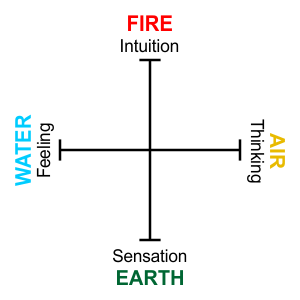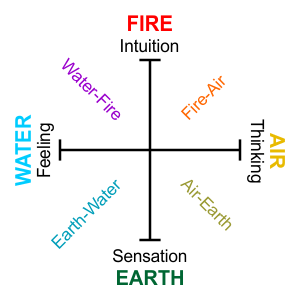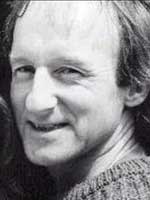At the Kepler Day in London on 12 November 1994, I [Charles Harvey] presented an astrologer's eye view of the current situation in astrology, together with some ideas on different approaches to astrological research which I hope may stimulate some fresh thinking and be of some practical value to those engaged in this intellectually and methodologically challenging area.
To start with, I think we need to face the fact that there is a kind of schizophrenia in the way we think about astrology within the research community. What it amounts to is that there have been two distinct categories of astrological development going on in astrology over the past 75 years, one which is discussed in research circles, the other which is ignored, indeed often ridiculed by some academic researchers. Category One is that less formal research undertaken by astrologers to help clarify and enhance our understanding and application of astrology. Category Two is that formal research conducted by astrologers and non-astrologers to find evidence for astrology which would be acceptable by contemporary science and justify astrologers' claims.
Whilst Category Two astrological research seems to have reached something of an impasse, Category One developments are in a Golden Age. This century, and especially the second half, has seen at least seven or eight major conceptual breakthroughs in the development in astrological thinking which have transformed our understanding of astrology and the way in which it is applied (see below). Indeed astrology has perhaps never before been so alive, with highly intelligent students engaged in vigorous debate and intellectual exploration.
So we have to ask ourselves why there is such a huge discrepancy between the vitality of astrology as taught and practised and the relatively blocked state of scientific studies? At least part of this paradox can, I believe, be explained by the nature of astrology and the kinds of thinking used by astrologers compared to the kinds of thinking used by most contemporary scientists exploring the area. In short, I believe it comes down to the temperament of those involved in these two categories of approach to exploring astrology. As the scholastics put it: the thing known is in the knower according to the mode of the knower. In other words, how we look at the world and what we see there is a function of our psychology and background assumptions. The optimist sees the glass as half full, the pessimist sees the same glass as half empty. The musician may hear the glass as a potential source of music. The painter sees it as an aesthetic object. The industrial chemist sees it as a product of certain processes. The paranoid teenager sees it as a potential weapon.
And so on. Each is right in their own terms.
Elements and Jung
There are parallels with the different approaches to the study of astrology. Astrology itself identifies many ways of approaching, experiencing and knowing about the world: the signs, the triplicities and quadruplicities, the planets, and so on. In considering different approaches to astrological research, it would seem appropriate that we use one of astrology's own classifications: the four elements' types: Fire, Earth, Air and Water. These elements have close, if not precise, parallels with Jung's four functions. If we lay these elements out on a four-armed cross in line with Jung's functions we get the following distribution. At the top of the vertical axis we place Fire (Intuition), opposite Earth (Sensation) at the bottom. On the horizontal axis to the left we place Water (Feeling) opposite Air (Thinking) to the right.

Elemental cross with Jung's four functions.
Approaches to astrology mapped in terms of the four elements and Jung's four functions. Locations given for different approaches are suggestions only. Ideally, astrology should be viewed and practised from the middle.
One of the most important messages of this diagram is the recognition, pointed out by Jung, that opposites repel and tend to deny each other's values. Fire-Earth is the mystic-natural scientist polarity. The strongly Fire-Intuitive type, who is essentially concerned with wholeness of truth and the larger, transcendent perspective, finds the physical, factual preoccupations of the Earth-Sensation type to be dull, boring and irrelevant. Likewise the Doubting Thomas sensation, measurement centred Earth type finds Fire's enthusiasm for intangible, unproven visions of truth bewildering and pointless.
The Water-Feeling type who knows through the heart and is concerned with the values of things finds the rational, thinking qualities of Air insensitive and far too abstract. The logic-centred Air type cannot think what the emotional Water-feeling type is on about and wants it to "be reason-able". We can all recognize these polarities in the on-going astrology debate. Good astrological research is only likely to emerge when all four approaches are honoured.
We can use this cross to describe one spectrum of different possible approaches to research.
Combining Types
In addition to the four pure element types of approach there will also be those approaches which lie between adjacent types. Ideally, a working astrologer would be located towards the centre of this cross where they can draw upon all four approaches. In practice, we all tend to have our own preferred approach, which will tend to be off-centre. Currently, the only research approach and method of analysis that is generally considered to be of value by science is the type that centres around the bottom right Earth/Air (Sensation/Thinking) quadrant of the diagram, which focuses on quantifiable measurement (Earth) and analysis (Air). By and large, all other approaches to knowledge are either ignored, or, if used, are asked to justify themselves by re-expressing themselves in Air/Earth terms of measurements and analysis.
The argument for this domination of the Air/Earth approach is that Fire's intuition may be correct, Water's feelings may be on to something, Earth's pragmatic experience may be true, but only controlled experiment (Earth/Air) can tell us objectively whether these things are "really" true. This is equivalent to the industrial chemist insisting that the perceptions of the optimist and the pessimist and the musician and the artist and the paranoid teenager be looked at and measured in terms of biochemical reactions before he will give their perceptions any credibility.

Elemental cross and combined types.
A measure of just now much of astrology is excluded from consideration by this Earth/Air approach can be gained if we look at eight of the major advances in astrological thought and practice during this century.
- The development during the 1920s and onward of the concept of symmetry and midpoints by Witte, Ebertin et al has greatly enriched our understanding of how astrology works and our capacity to penetrate more deeply into the underlying dynamics of any chart. These insights were garnered by many practitioners through sensitive observation of individuals probably drawing on all four approaches: intuition, feeling, reflective thought, and practical observation.
- The development from 1930s onwards of our understanding of the importance of cycles and a cyclical approach to the interpretation of chart factors as emphasized by Dane Rudhyar and later developed in their different ways by Ruperti, Addey, Barbault, et al. This is in many respects an Air-theoretical development which has proved itself in practical experience.
- The development in the mid-1950s of harmonics and the reintroduction of the importance of Pythagorean Number symbolism into astrological thinking and the attendant re-invigoration of a Neo-Platonic perspective through the work of John Addey et al. An Air-Fire innovation which has been developed through practical application and observation.
- The alignment of astrology with depth psychology and in particular with the work of Jung as initiated by Dane Rudhyar in 1935 and subsequently elaborated by Liz Greene, Richard Idemon, Howard Sasportas, et al. Mainly a Fire-Air, Fire-Water development illustrating the power of analogical and metaphorical thinking for grappling with the archetypal principles which underlie astrology.
- As a direct extension of 4), the re-emergence of mythology as a key factor in obtaining a deeper understanding of astrological principles as archetypal processes as exemplified by the work of Liz Greene, Richard Idemon, Jane Malcolmson, Melanie Reinhardt, et al. As 4), this is a Fire-Air and Fire-Water symbolic, analogical and metaphorical approach to truth which can in many respects be considered the "natural" mode of thought for astrologers.
- The development of Astro*Carto*Graphy in the 1970s by the late lamented Jim Lewis, which illustrates the fact that in some way each birth chart is at one with the Earth as a whole rather than anchored on one locality. A profound insight developed pragmatically through observation.
- The development of the concept of composite charts by Robert Hand et al and the growing recognition that the birth patterns of separate entities can interact to produce a separate entity which is descriptive of their group interaction. A Fire-Air intuitive insight which has been developed through practical observation.
- The re-emergence of the Platonic concept of the anima mundi in various forms, as in the reinvigoration of mundane astrology by Baigent, Campion and Harvey and the Primal Zodiac of Michael Harding. A Fire-Air, intuitive-theoretical development.
In addition to the above there have been developments of a Fire-Water approach which explore the expression of astrological archetypes through artistic and non-verbal forms such as in Astro-Drama (Friedel Roggenbuck) and in the area of literary studies (Paul Wright), which trace the metaphorical expression of astrological ideas through the creative preoccupations of writers. The development of a divinatory approach to astrology also probably belongs especially to this approach, though ideally it would need to come from the centre of all approaches. The Earth-Water, practical feeling approach has probably mainly made itself felt in astrology through such areas as counselling, sand play and art therapy as exemplified by the work of Jung's daughter, Frau Grete Bauman Jung and others.
Of course, such major developments in astrology, with all their profound philosophical implications, are discounted or dismissed by most Category Two type researchers as "unproven", "illusory" or as post hoc rationalizations to explain why any chart fits the fact. This is not helpful.
Bridging the Gap
The questions to which we have to address ourselves are: Is there an unbridgeable gap between "Category One" and "Category Two" ways of approaching truth? Are they really mutually incompatible or should they not rather be working hand in hand and complementing each other?
The simple answer is that, of course, for astrologers within astrology theses different approaches are constantly complementing each other. Most Category One type investigations are done on a case-study basis in which observations in a particular instance are then clarified by the examination of additional cases. The key to such case-study work is a sensitive awareness of and insight into astrological archetypes and their possible expressions. The development of our understanding of midpoint and of harmonic charts has been based on such detailed studies of individual examples.
The problem comes when one tries to quantify such insights. The astrologer knows that the same combination can express itself in a whole range of ways. For example, Uranus in hard aspect with the midpoint of Sun and Moon may produce a Napoleon or a Hitler, but equally it may produce a Margaret Thatcher, a Spike Milligan, a Martin Luther or a particular astrologer such as Dr Zip Dobyns.
To a Category Two researcher, this range of different expressions of Uranus with Sun/Moon simply demonstrates that this combination is incapable of providing consistent results. To a Category One student, who is used to thinking in terms of archetypes, the results do reveal an underlying consistency. Each of these cases is a fairly clear example of the autocratic, independent and revolutionary qualities associated with the Uranian archetype. However, attempting to quantify such archetypal qualities in a way which will satisfy Category Two workers in not easy.
A pioneering piece of research which does successfully manage to bridge both approaches is the set of Eureka experiments by science historian Nick Kollerstrom and computer scientist Mike O'Neill (The Eureka Effect, Urania Trust, Spring 1995). By choosing to study inspired, Eureka-type scientists to test the observations of John Addey about the qualities of the fifth and seventh harmonic series of aspects, Kollerstrom and O'Neill focus on a very specific and clearly definable category of people with distinct psychological qualities which expressed themselves in a particular way at a particular time. In astrological terms, such an approach, which emphasizes vivid qualities, is likely to increase greatly the chance of separating out signal from noise.
Another example of different approaches mutually supporting each other can be seen in the modification of the traditional view of Jupiter. Originally seen as the Greater Benefic, in the past decades there has been a much greater emphasis placed on the negative aspects of this planetary archetype and its tendency to "play God". These changes have come about in large measure because of the intuitive Fire-Air approach of astrologers like Dane Rudhyar, Liz Greene, Richard Idemon, Jane Malcomson et al. Such astrologers have underlined the great importance of the study of mythology and the symbolic, analogical-intuitive thinking which is needed in really obtaining an understanding of the planetary archetypes. These mythological, client-based insights have been supported by the quantitative Earth/Air approach of the Gauquelins, working with biographical character traits, which equally reveals Jupiter's tendency to fascism, inflatus and grandiosity. We should note, however, that these intuitive-Fire insights are not dependent on such an Earth/Air approach. They can and do stand in their own right.
Likewise, Richard Tarnas' work on enlarging our understanding of Uranus-Prometheus (see his Prometheus the Awakener, Auriel Press 1993) is a classic piece of Fire-symbolic-intuitive insight backed up by case-by-case studies. Such an approach combines an intuitive understanding of mythology with psychological insight and empirical analysis of the charts of famous individuals. No amount of number crunching alone could yield such qualitative insights.
But it is in the area of evaluating psychological astrology that we have the biggest discrepancies occurring between the methods of thinking and language used by astrologers and that used by most researchers to date. Most astrologers paint portraits of their clients in rich, symbolic, analogical language which focus on the psychological dynamics of the individual and their sub-personalities, and the likely outcome of the particular mix of planetary archetypes in terms of personality, career, life events, etc. It is clearly inappropriate to attempt to evaluate such psychodynamic insights with the results of psychometric tests which attempt to measure abstracted dimensions of personality.
Like needs to be compared to like. For example, Bill Clinton and one of his aides might well have identical scores on a personality test, yet their personal psycho-dynamics and mix of sub-personalities as experienced by friends and described by those with psychological insight would be likely to be very different. An astrologer would expect to be able to produce a human profile recognizable to close friends, but would be unlikely to have much to say about the likely personality scores.
Here it might be fruitful to try comparing individually prepared astrological portraits of people with the kind of rich psychological profile produced by, for example, a depth psychologist or a psychologically-aware novelist or journalist who is used to summing up character and motivation in clear, vivid language. Or to have a psychologist, who knows individuals intimately, evaluate an astrologer's reports about those same people. Obviously such a type of research is, like life, not neat and tidy. It is dependent on personal judgment and so very much more complex and demanding on the researcher. Whilst such methods cannot readily be reduced to Earth/Air's standardized questionnaires and number crunching methods, they would, in my view, be comparing like with like and therefore have a much greater chance of providing clear evidence of astrology's power to reveal important information about an individual's psychology.
The more those of us researching astrology start thinking in the kind of symbolic and metaphorical language used by astrology, the more likely we are to come up with experiments which will produce convincing and interesting results. In this respect, to end on a personal note, I would say that in writing Sun Sign, Moon Sign (a book dealing with the characteristic dynamics of Sun and Moon in the chart), my wife Suzi and I learned more about the Sun-Moon dynamic from the study of literary biography than from anything else. This bears out Paul Wright's findings in The Literary Zodiac: literature is an ideal mirror in which we can see written large the astrological dynamics of the individual. I hope more students will give themselves the pleasure of engaging in types of research where the vivid colours of the archetypal realities have an opportunity to shine through.
This article first appeared in Correlation 13(2), Northern Winter 1994-1995
Author: Charles Harvey
Charles Harvey was a British astrologer, teacher, organizer, author, researcher and counselor, and an integral part of British astrology for more than 30 years. He started working as a full-time professional in 1966 at which time he earned his diploma in the Faculty of Astrological Studies. From 1973 to 1994 he served as President of the British Astrological Association, overseeing its growth to 1,500 members. He co-authored Mundane Astrology and Working With Astrology. He also directed the Center for Psychological Astrology in London with Liz Greene.
---------------------------------------------
Source
https://www.uraniatrust.org/astrology/approach-to-astrology-research



